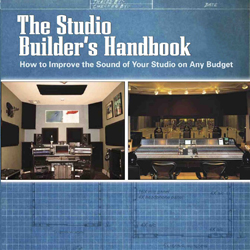Now more than ever, a lot of people are building their own studios. That’s great! However, there are some things to take care of before throwing up the studs.
Here is an excerpt from my newly released book, The Studio Builder’s Handbook, on permits for your studio.
Permits
Before you begin construction, check to see if you need any permits for the job. A construction or building permit is required in most counties for new construction, adding on to a pre-existing structure, and in some cases, for renovations, and is their way of ensuring that the construction is safe.
Depending upon your location, a permit may be required even for repair or replacement of existing fixtures such as replacing windows or bathroom upgrades. A plumbing, electrical or mechanical permit may also be needed for any addition or changes to a building’s existing system, like moving or adding an electrical outlet.
In order to obtain a permit you have to submit a plan for your project. Plans for projects such as room additions can usually be drawn up by a draftsman, while large projects may require plans prepared by an architect or engineer licensed by the state you’re living in.
For projects such as routine retaining walls, patio covers or carports, some cities or counties have standard specifications that can be followed within certain limitations, so ask if what you’re doing fits within those limitations.
Those specifications, together with a plot plan showing your project, may be accepted by the Department of Building and Safety.
Generally, the new construction must be inspected during construction and after completion to ensure compliance with national, regional, and local building codes. The inspection is important because the project isn’t deemed complete until it’s inspected.
Permits usually only last for 120 to 160 days, then they expire and you’re now in violation of the city or country code, so call for that inspection as soon as you can.
Failure to obtain a permit can result in significant fines and penalties, and even demolition of unauthorized construction if it can’t meet the code.
Although you might be able to get away without a permit with no one being the wiser, it’s a requirement if you want to make a claim on any business or building insurance that you might have. Having anything built without a permit is a very convenient excuse for the insurance company to decline your claim!
Applying for a permit or inspection is usually done at your local Department of Building and Safety. Some larger cities will even allow you to apply online, so Google “your city building permits” first to find any info on the process locally.
Don’t forget, if you are renting leasing space in a building, you’ll be required to get the permission of the building’s owner before you undertake any major, or in some cases, even minor construction. Make sure that you discuss your plans for the studio with the owner before you sign your rental contract or lease agreement.
You may find that they might deny you permission to do such work to their building and you may find yourself stuck in a long lease with no way out. If the landlord or owner is a little skeptical about your plans when you’re negotiating your rental contract, it may be best to move on and find another location.
Also, make sure that the person you’re negotiating with has the authority to permit you to do such building changes. If he is only an agent, friend or relative of the owner, he or she may not have the authority to tell you it is okay to do such work.
Get everything in writing before you sign the dotted line or you could be in for a real nightmare!
Bobby Owsinski is an author, producer, music industry veteran and technical consultant who has written numerous books covering all aspects of audio recording. For more information be sure to check out his website and blog.





















